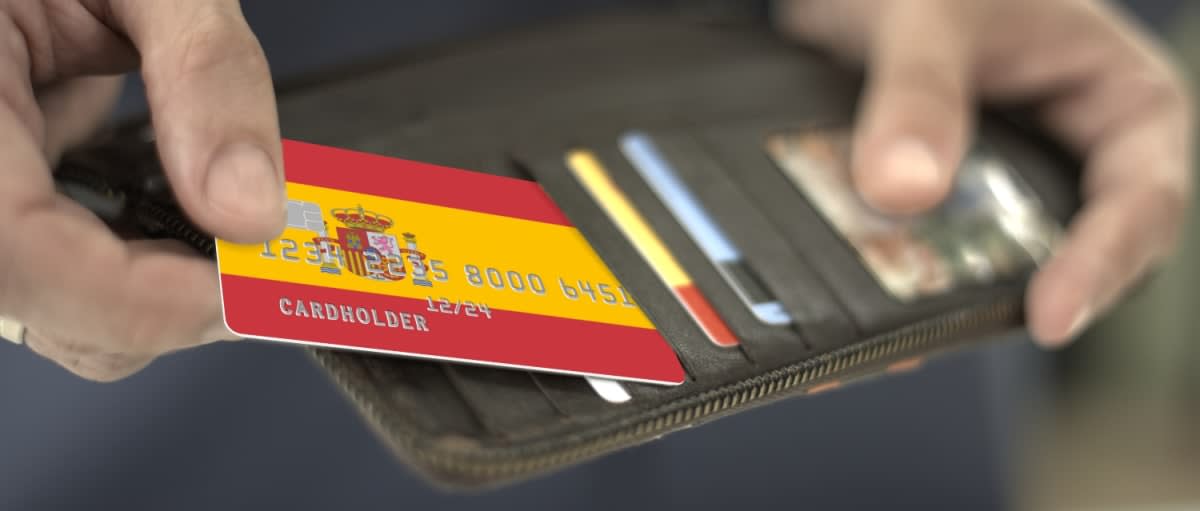Can non-residents get a mortgage in Spain? Absolutely! And not only is it possible, but the process is more straightforward than many buyers expect. Spain has a well-established system for lending to overseas buyers, with competitive interest rates and banks familiar with cross-border applicants. If you’re serious about buying a property in Spain, understanding your mortgage options is a key step in your journey.
Whether you’re buying a coastal holiday apartment, a countryside finca or a city-centre bolthole, this guide explains the different mortgage types available in Spain, how much you can borrow, what documents you’ll need and what to expect during the application process.
Download the Spain Buying Guide
Contents
Types of mortgages in Spain
Spanish banks offer a few different mortgage types, with the main options being fixed rate and variable rate. Some lenders may also offer a mixed option that starts with a fixed period and then switches to variable after a few years.
| Mortgage type | How it works | Best suited for |
|---|---|---|
| Fixed rate | Monthly repayments stay the same throughout the term, unaffected by interest rate changes | Buyers wanting stability and predictability in budgeting |
| Variable rate | Interest rate linked to the Euribor (Euro Interbank Offered Rate), adjusted every six or 12 months | Buyers willing to take on rate fluctuations for potentially lower payments |
| Mixed rate | Fixed rate for an initial term, then switches to variable | Buyers planning to sell or refinance within a few years |
A mortgage broker can help you decide which one is best for you.
Note that interest-only mortgages are generally not available for residential properties in Spain. All loans for residential properties are repayment-based, meaning your monthly payments reduce both the capital and interest until the full loan is paid off. You can, however, get buy-to-let mortgages for investment properties, which are often interest-only.
How much can you borrow?
Loan-to-value (LTV) ratios are key when planning your budget. Spanish banks typically offer:
- Up to 70% LTV for non-resident buyers
- Up to 80% LTV for Spanish tax residents
That means if you’re buying a €200,000 property as a non-resident, the bank may lend you €140,000. You’ll need to cover the remaining €60,000 plus an additional 10-15% in purchase costs, such as taxes, notary fees and legal expenses. For properties under €100,000, the LTV will likely drop to around 60%.
Applying for the maximum amount early on gives you flexibility. You can always reduce the loan if needed, but increasing it later on can be difficult once your application is under way.
Mortgage eligibility criteria
Your ability to get a mortgage depends on several personal financial factors, not just your nationality. Spanish lenders will review:
- Your income – your debt-to-income (DTI) ratio should generally be below 30-35%
- Existing financial obligations – other loans, credit cards and mortgages will be factored in
- Residency status – non-residents may get shorter mortgage terms (usually 25 years max)
- Age – most mortgage terms end by the age of 70, although some banks will lend until 75 with evidence of pension income
Own a property in the UK with a mortgage? That alone won’t be a problem – the key is how it affects your affordability calculations. If your UK mortgage payments stretch your finances, that could limit your borrowing power in Spain.
If you’re nearing retirement age, some lenders allow you to include a younger guarantor (such as your adult children) to secure better terms or extend the mortgage duration.
Documents you’ll need
Be prepared to supply the following paperwork when applying for a mortgage in Spain:
- Valid passport
- Spanish NIE (Número de Identificación de Extranjero)
- Proof of address (utility bill)
- Three to six months of payslips and/or bank statements
- Source of deposit funds
- Tax returns (if self-employed)
- Employment contract or proof of pension
- Spanish bank account for payment purposes
Document requirements can vary slightly depending on the bank and whether you’re salaried, self-employed or retired, but providing clear, traceable financial information will make the process much smoother.
Working with a mortgage broker

Securing a mortgage independently is possible, but a broker can make a huge difference – especially if you’re unfamiliar with the Spanish system or you want to compare several banks at once.
A specialist broker can:
- Help you understand your realistic borrowing capacity
- Negotiate with banks on your behalf
- Recommend lenders experienced with foreign applicants
- Streamline paperwork and translations
Don’t wait until after your viewing trip to speak with a broker – if you find your dream property but haven’t arranged your financing, you may miss out. The Your Overseas Home team can connect you with a trusted, English-speaking broker who understands the needs of British buyers.
Step-by-step mortgage process
Here’s a general overview of the mortgage journey in Spain:
- Initial consultation – discuss your borrowing capacity with a broker or bank
- Get pre-approved – receive a mortgage pre-approval so you can house-hunt confidently
- Find a property – view and reserve your chosen home
- Valuation – the bank commissions a valuation of the property (you usually pay for this)
- Submit full application – provide supporting documentation for underwriting
- Mortgage offer – you’ll receive a binding mortgage offer with full terms
- Cooling-off period – usually 10 days to review everything
- Final signing – mortgage and purchase contracts are signed before a notary
The full process typically takes between six and eight weeks, though you should be able to get an agreement in principle in just a few days. Working with a lawyer and broker can help keep things moving efficiently.
What are the current interest rates?
Mortgage interest rates in Spain fluctuate based on the European Central Bank’s monetary policy and the Euribor (Euro Interbank Offered Rate). At the time of writing (April 2025), Spanish banks are offering mortgages rates of:
- 2.5%-3.9% – for Spanish residents and citizens
- 2.9%-4.9% – for non-residents
Bear in mind that interest rates may also depend on the LTV ratio, your credit profile and whether you are applying as a single applicant or jointly. Dual-income applications tend to open up better deals.
If you’re buying a lower-value property (around €60,000 or below), rates are likely to be higher, and many lenders won’t offer mortgages for purchases under €30,000.
Frequently asked questions
Yes – if you can show reliable pension income and a manageable debt-to-income ratio, many banks are happy to lend to retirees, although the term may be shorter.
Most Spanish mortgages allow early repayment, but fees may apply – typically around 0.15% to 0.25% for variable mortgages and up to 2% for fixed rate mortgages.
If you’ve chosen a variable rate, your repayments will increase. That’s why many overseas buyers prefer the certainty of fixed rates, even if they’re slightly higher upfront.
You might also like:








